Tactician, Giles Scott
Q&A
Who inspired you to start sailing?
My parents. They pushed me out on the water in an optimist dinghy on Grafham Water reservoir age six, tied to a long line!
First boat?
A Mirror dinghy
First sailing club?
Grafham Water Sailing Club
Childhood hero?
Sir Ranulph Fiennes
When did you know you wanted sailing to be a career rather than a hobby?
When I won my first National Championship at 14 I thought I might have a shot at being a good sailor
What do you love most about sailing?
That every day on the water is different. No matter how good you are, every day you sail you can teach yourself something new
What has sailing taught you?
How to really apply myself to a career I love
Favourite ever sailing race?
The Rio 2016 medal race, when I won my gold medal
How do you know when you have good form?
I turn pretty un-emotional and I don’t let victories make me complacent as well as not letting defeats get me down
How do you keep going when you're on the limit?
Think of what it is I want to achieve
Career highlight?
Winning my Olympic gold medal at Rio 2016
If you weren't a sailor, what would you be?
Probably in the armed forces, something active to save me from a desk job
Best advice?
If you’re lucky enough to have a goal, chase it
What other sports do you play now?
Kitesurfing and occasionally squash. We cycle for fitness and recovery
How do you spend your time when you are not sailing?
It's normally still on the water!
Do you support any particular charities?
The Andrew Simpson Sailing Foundation and the 1851 Trust, the official charity of INEOS TEAM UK
Where do you see yourself in ten years’ time?
Hopefully still involved in the Americas Cup having already won it for Great Britain!
Funniest team-mate?
It pains me to say it but David ‘Freddie’ Carr...
Profile
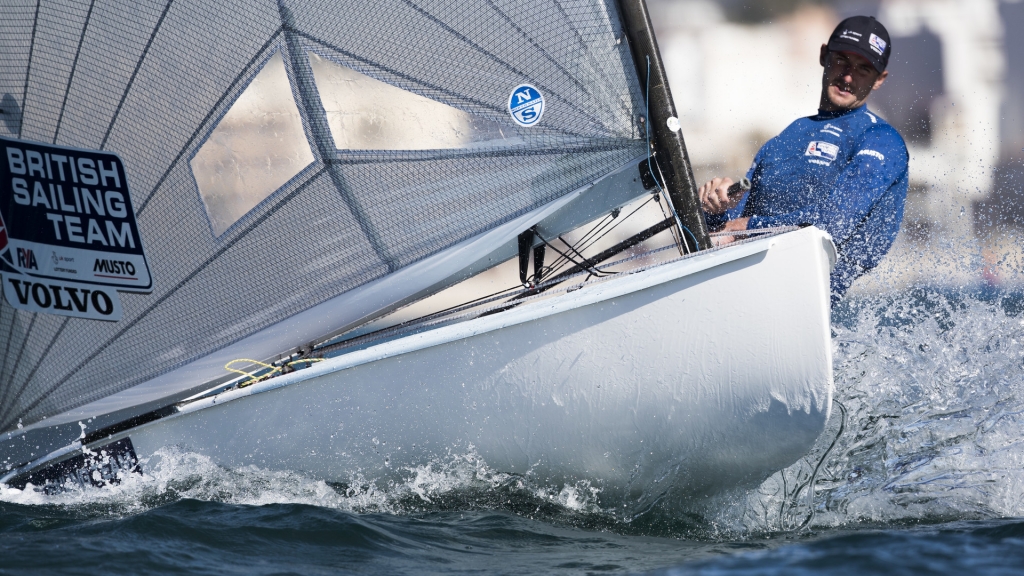
© Lloyd Images
Giles Scott has his sights set on making history by winning the 36th America's Cup for Britain with INEOS TEAM UK in Auckland followed up by winning the last ever Finn gold medal at Tokyo 2021. He’s currently competing at the highest level on the Olympic circuit alongside his America’s Cup duties - preparing for a tactician role on the AC75 – a similar role that he under took in Bermuda for the 35th America’s Cup racing in the ACC.
Giles is used to balancing the two programmes, having run a dual AC cycle and Olympic circuit last time around but first up was gaining selection for the British Olympic spot.
It began with a honeymoon cruise, continued as a project to keep the kids out of the mall, and then ended up on the gold medal rostrum at the Rio Olympics and a place as tactician on Britain’s Challenger for the America’s Cup – but Giles Scott’s journey to glory could not have started less promisingly. “I don’t come from a particularly sailing-orientated family. My parents had sailed in the past but only the odd holiday here and there. They chartered a boat in the Caribbean for their honeymoon, but that’s about the extent of the sailing they did.
“I think it was something to keep me and my brothers – as my dad called it – ‘out of the weekend mall culture’. We grew up near Grafham Water Reservoir and did beginner’s sailing courses there. I think I started my first one at six, quite young, got sent out in an Oppie, tied to a rope with the instructor shouting instructions at me. My mum was always quite keen for me to do club races, but I was never that interested until I was maybe ten or eleven. Until then sailing was just weekends, perhaps every other weekend, and not in the winter!
“I didn’t race the Optimist, I started that in the Topper, and won a Topper Nationals in 2001, when I was 13 or 14. I know I was early into the youth classes, my parents bought me and my brothers a Topper to share. I made the national squad and I think I did two years, then in my final year I was finally performing well. I got on with all the people that I sailed against and in the squads, I felt as if I fitted in. I wasn’t into the ‘cool’ things, like football. I found like-minded kids at all these sailing events. If there was a particular inspiration, it was Beano [Ben Ainslie]. In about ’97 or ’98 when I was nine he came and did a signing session at the club, he was the person that every youth sailor looked up to.”
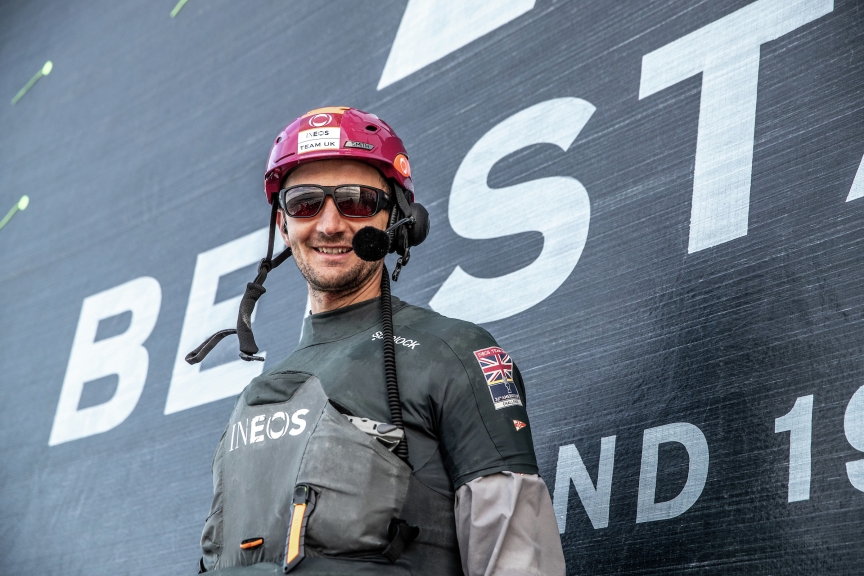
© Cameron Gregory / INEOS TEAM UK
“At the time I don’t think I ever really thought that that was more than a dream. It wasn’t until my last year in youth sailing that I properly thought I could do it.” After a blistering Junior and Youth career in Toppers, Laser Radials and finally the Laser, Giles Scott won the ISAF Youth Worlds in South Korea in 2005. It’s been the platform from which many professional careers have been built. One of the immediate and automatic outcomes is promotion to the RYA’s Olympic development squad with access to coaching and funding. A lot of people might be inclined to throw in their all at it at this point, but instead, Scott went to university.
“I studied geography. To be honest, I did it because I’d heard from my brother that it was good fun, and my parents encouraged me to go. I studied, but I wasn’t as passionate as I should have been. I just wasn’t that into it, I always knew that I was going to keep my sailing ticking along and then as soon as I graduated I was going to do the sailing full time. I wasn’t part of the sailing team at university, I wanted to meet and have good friends outside of sailing, and lead as much of a normal uni life as I could. I raced my Laser in the holidays and at the weekends, and then went down to national training camps when it fitted. It felt, in honesty, like I still needed something as back up and I suppose for me at that age, a degree was some form of backup.”
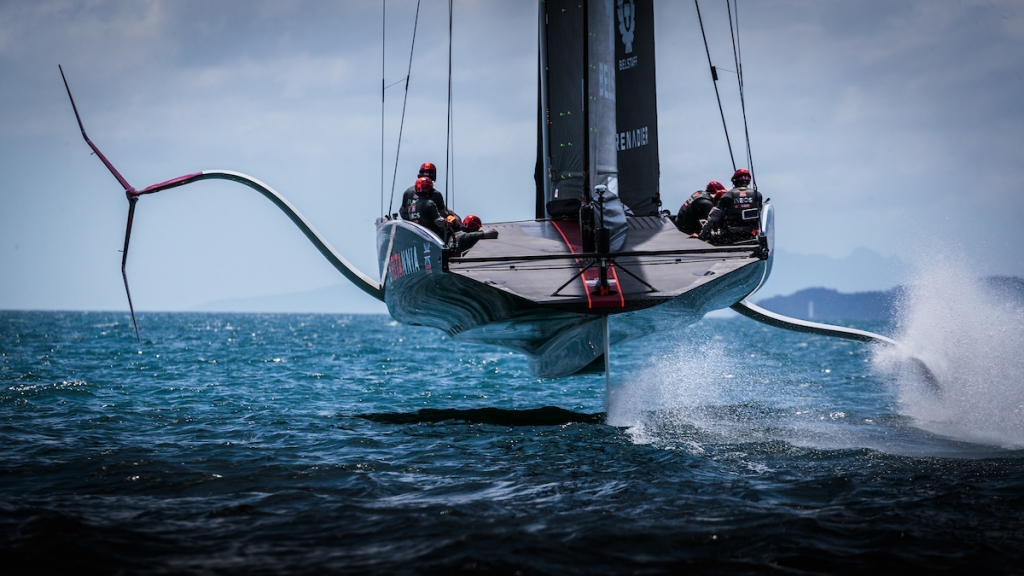
© B PETRIE
Fortunately, his sailing didn’t suffer. “I didn’t go backwards. I went forwards, which did surprise me. My best result in Lasers was at the World Championships in the summer after year one of University in 2006. I finished top Brit ahead of some very talented sailors which was quite a big deal as a newbie to the senior circuit. I think I finished seventh or eighth. It gave me a good bit of a boost, thinking I could actually be alright at this. I’d just gone on holiday for the World Championships and found myself doing pretty well.”
“Straight after that Worlds, I moved into the Finn. I outgrew the Laser [Giles is now 6ft 6] I just got too big. I had absolutely no idea about that whole technical aspect and what to do with rigs, sails, masts, settings. No idea. I was just so, so green to it. I pushed the RYA to help me buy a new boat because I didn’t want to do it and be slow. It was one of the best things I could have done for my early Finn sailing.” Giles Scott spent the afternoon with David ‘Sid’ Howlett, Ainslie’s legendary Finn coach. “I sat down in his house and he told me how the world works for an afternoon, told me what I needed to do. I went and got Sid’s best guess at the kit I needed, and I guess it wasn’t that bad because I use very similar kit to that now.”
Giles Scott finished University in 2008, but not before working with Ainslie as a training partner both in Australia and Qingdao ahead of the 2008 Olympics. “After I was done with Uni I moved down to Weymouth, to give it my best shot, but those first few years I was kidding myself that I was Olympic campaigning. I wasn’t, I didn’t really have any idea how to Olympic campaign until really late in that cycle.
Giles Scott’s battle with Ben Ainslie for selection for the London Olympics has been well documented. Scott pushed Ainslie very hard but in the end, there was only one choice the selectors could make. “I mean, at the time, it was fine. In honesty, I didn’t fully understand the importance of the really important events. I knew that those were the events that you had to win, but for some reason I didn’t really connect winning a Sail for Gold regatta with the hugeness of the Olympic Games a year later. There was just some kind of disconnect there – but clearly Ben was all over it. He knew exactly what he had to do.
“I didn’t have that drive and enough need, and that was the biggest fundamental change that I made when I decided I wanted to go to Rio 2016. I remember when the Games actually came about, I was down in Weymouth and was making little reports that I kept for myself to use as a foundation to set up the next campaign. I documented anything that I saw that I thought contributed to doing well, or was detrimental or distracting; how different people and teams approached the Games, both broadly and in detail where I thought it was relevant. This was not just in reference to Ben’s Games, it was everything.”
But even as Ainslie had closed the London Olympic door shut, other doors had opened for Scott. He joined Team Korea and then Luna Rossa for the 34th America’s Cup. “I was completely out my depth having sailed nothing but Finns. I took to racing quite easily, but all the boat handling and crew mechanics, I was terrible at, so I was on turbo learning throughout 2013.”
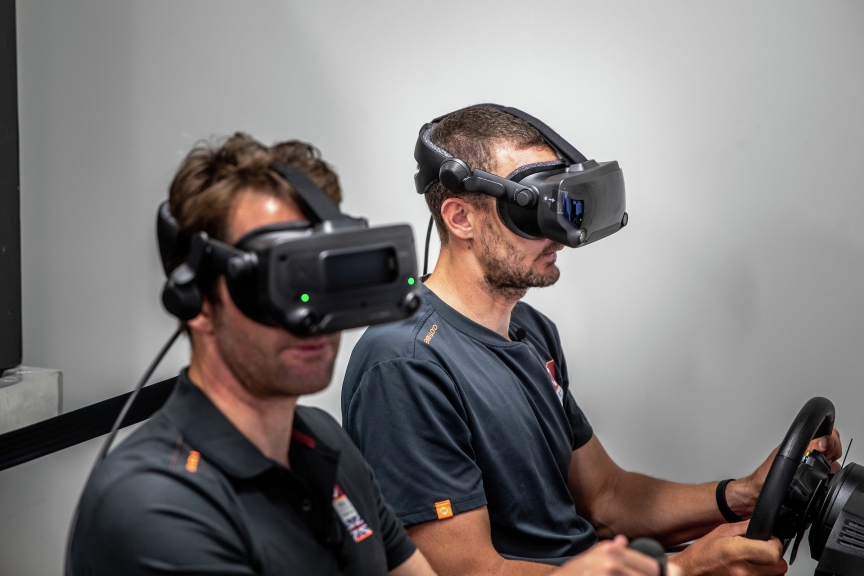
© C GREGORY / INEOS TEAM UK
Luna Rossa’s America’s Cup challenge was over at the end of August 2013 when they were beaten by Emirates Team New Zealand in the Challenger Finals. By October, Scott was back home and full-time in the Finn. “When I got back, I suppose I felt infinitely more aware of what needed to be done and how it should be done. How much stuff you can actually get done in a day, a week. I sat down with my coach Matt Howard and set all that out in a campaign document where we looked at what we thought a Finn Olympic gold medallist was going to look like in terms of skill set, kit, physical qualities, body weight. We used that to create a pathway of results that we thought we needed to get, where we needed to peak, how the kit path should match up to that, and that was it. Then we went off and tried to do it. The plan changed, obviously, but the fundamentals, from the outset, were spot on.”
Giles Scott’s record from there to gold in Rio was every bit as dominant as Ben Ainslie’s in his pomp. He won every event from the autumn of 2013 through to the end of the Olympic Games with one exception, a silver medal at the Trofeo SAR Princesa Sofia. “From the outside I suppose it wouldn’t have looked in doubt, but that’s not really the way it works. It did go really well. That really helped in the confidence building, I suppose... it makes the plan look as if it’s a lot better than it might have been, but regardless of that, whatever we were doing was working.”
And then, Giles Scott found himself at the Rio Olympics, with just one week to make the dream come true. Or not. “Something I struggled with in the build up to the Olympics was the ‘first Games’ mentality. How it’s clearly on the mind of a lot of our support staff, it was an important point to have raised but for me that was enough, I wasn’t interested in over-thinking it. It was talked about a lot in the group that we had going to the Games, about how you should approach it, how it’s different, how it changes you, how it changes the way you race. I just remember thinking, ‘Yes, alright. I know it’s my first Games and I’ve never been there. I don’t know what it’s going to be like, but now just let me go and get on with it. I’m going to deal with it how I deal with it.’
“I think my approach now has become much more ruthless, both in terms of ruthless on others, and ruthless on myself. Before it was a bit of a question, ‘Should I do this? Do I have to do that? Is that really necessary?’ None of that thinking was there by 2013. I think the ruthlessness was always there but it was buried. I obviously had to draw upon it. I suppose my ruthless streak came from the fear of doing another four years and then not getting what I wanted at the end of it. That was probably the biggest thing that made that manifest.”
“I always had a necessity to win, and I think it’s really easy for me to feel like a failure. It’s always that that has driven me to win, as opposed to the feeling of winning. I like to win because I don’t want to be at home afterwards thinking, ‘I blew it.’ That’s been with me for a long, long time. Like the winning streak I had, you’d think that you’d just gain more and more confidence after each one, but actually, I found that each one I did, the fear of failing in the next one became even greater. So that would become my motivation to train harder to win again.”
Given the importance of the 2016 Olympics to Giles Scott, he could have been forgiven for skipping the 2017 America’s Cup; doing the two events back-to-back would be very challenging. “I was always looking to be involved. Obviously, I saw the way that Ben signed up to Oracle pre-2012. I saw that and thought, ‘That’s the way I want it to work.’ You can clearly focus on your Games and get a proper Olympic campaign done and then still roll into the Cup, which was always what I’d wanted to do. So I definitely wanted to try and engineer something that would help me to go Olympic sailing and then roll straight into the Cup, and fortunately, Ben was in agreement.”
Unsurprisingly, by late 2014 Scott was a target for other America’s Cup teams. “So I gave Ben a call and said, ‘Are you interested?’ We’d always raced against one another, but never together. Then two weeks later, I’m on a contract and I was in, and in a situation that I was very, very happy with, because they worked with me to do both campaigns. On a personal level it was a real career-defining 12 months. To get a shot at an Olympic medal – which I managed to do – and then roll straight into the chance of winning an America’s Cup. Not many people get that chance. It felt like such a big break, a big opportunity. And now I’ve got the chance to do it all over again, there was never any doubt that I wouldn’t stay with the team and go again.”
Scott is unlikely to be fazed by the pressure to follow up his gold with a second consecutive gold in Tokyo alongside trying to make history, helping to bring the Cup home to British waters. “I’m not sure how the other guys really view it, but for me it’s simple, I’m going to give it my all, I just want to win.
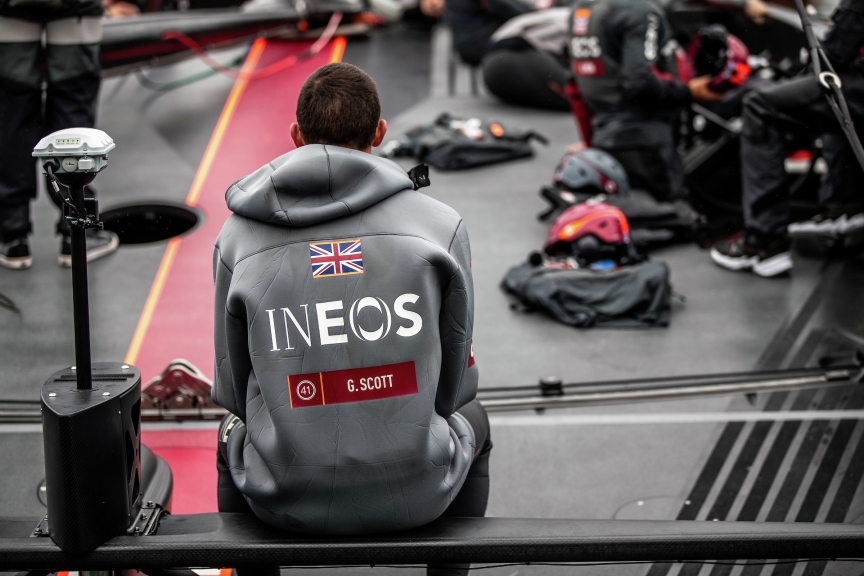
© Cameron Gregory / INEOS TEAM UK